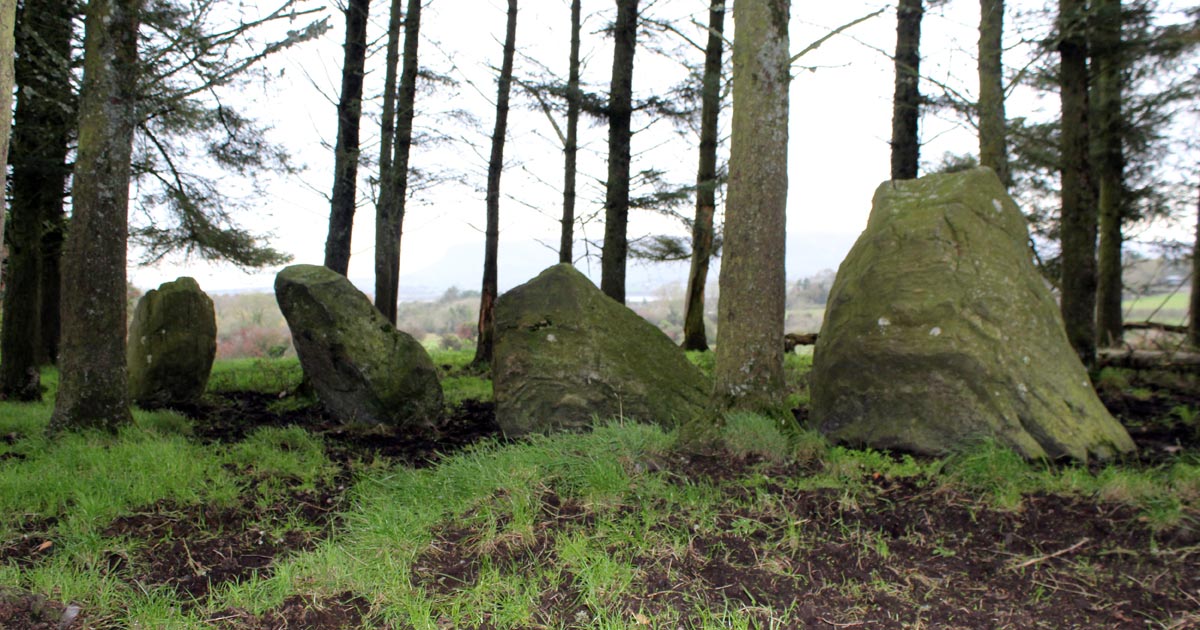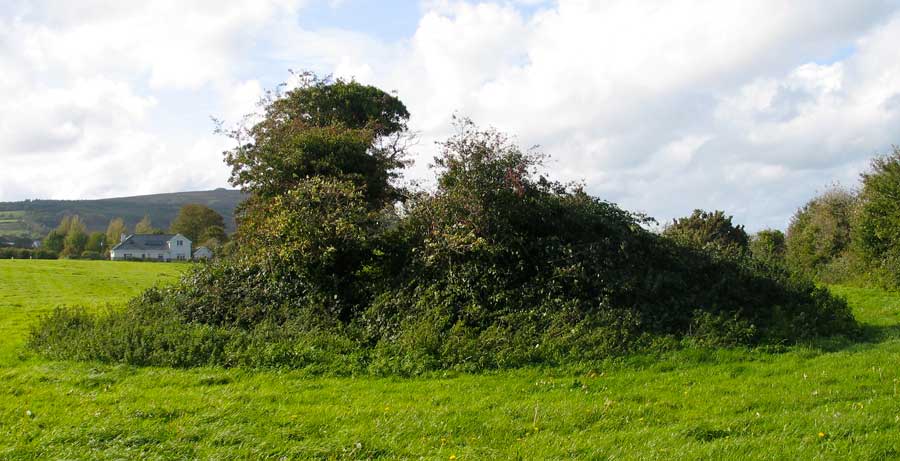The Barnarashy monuments.
Barnarashy is a small collection of monuments one kilometer north of Carrowmore. The monuments are on farmland and there is no public access. There were at least five monuments here, but now the remains of two are all that can be seen because the site is crossed by a field boundary and is extremely overgrown. W. G. Wood-Martin made the following observations about the Barnasrahy monumets:
The first of the northern, or detached cluster of circles, is near the road leading from Rathcarrick to Sligo, in the townland of Barnasrahy. Of No. 61 there are but five stones remaining; they are six feet in height; and from the arc of the circle which they describe, it may be concluded with certainty that the circle was of unusual extent. One stone has been recently split by dynamite, not to clear the land, but apparently from sheer wantonness. Two intermediate circles, marked on the ordnance map, but unnoticed by Petrie, have almost totally disappeared.
The next monument is a tumulus, composed of stones and clay, popularly known as Cruckan-a-curragh, the little hill of the marsh, is about 180 feet in circumference, and 15 feet in height. The summit, as is usual in sepulchral cairns, rather hollowed. A few yards to the southeast of the cairn is a circle quite perfect, but the stones are nearly covered with earth. It is 70 feet in diameter, traversed by an old ditch that conceals its proportions, and to some extent obscures a very peculiar arrangement of stones in the interior of the enclosure. The disposition of boulders is unique in this large series of remains. Human bones were found within the centre, and the people of the neighbourhood state that a bronze sword was also discovered in it many years ago.
History of Sligo, W. G. Wood-Martin.
The largest site is the remaining stones of a substantial cairn with a cruciform chamber. The diameter is some twenty meters across, with a cruciform chamber 4.5 meters across. Six kerbstones remain in position. The site is cut in half by a ditch and overgrown with bushes and undergrowth, so not much can be seen. It must have been a major monument given that it had a cruciform chamber.
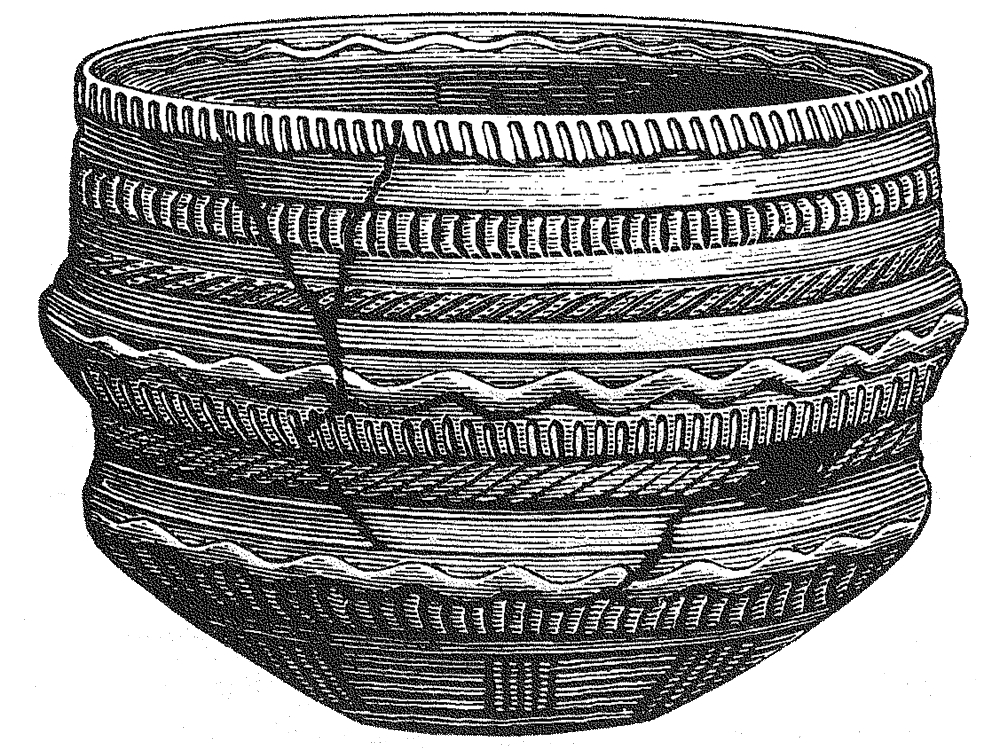
Roger Walker excavated the site in the 1830's, and found the bronze age food vessel, illustrated above, which he sold to the Duke of Northumberland. It now resides in Alnwick Castle, along with several other items from Sligo, sold by Walker shortly before his death.
Wood-Martin excavated the chamber in 1888, and found the right hand recess to be full of pieces of white quartz. He also found cremated and uncremated bones, charcoal and a hammer stone.
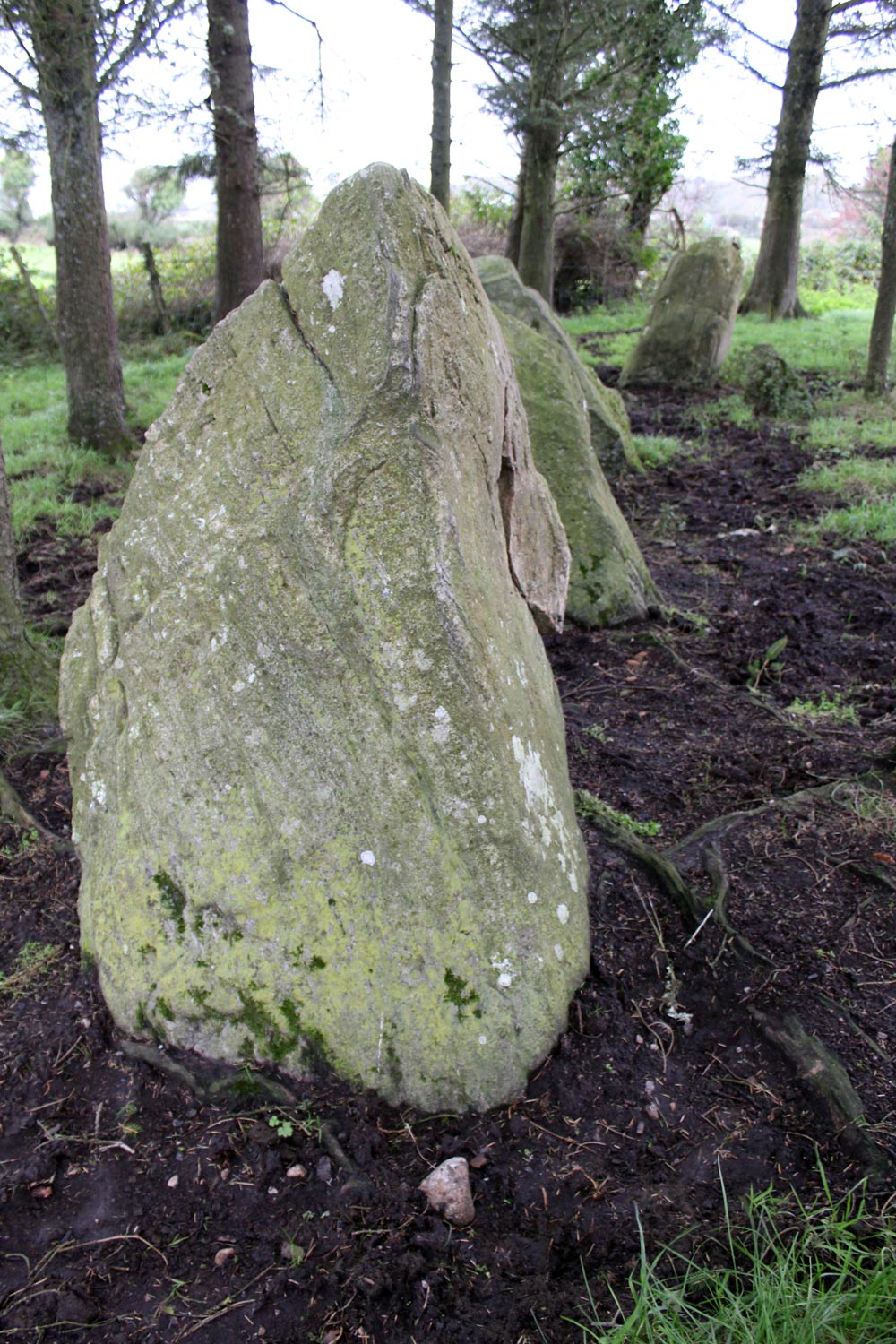
The only surviving monument, shown in the photo above, is a stone row: four large boulders and one offset smaller stone. This row may have a possible alignment towards Knocknarea. Such stone rows have been examined in other parts of the country, and are thought to date to the bronze age. They often point to the rising or setting of a heavenly body. I haven't come across any research suggesting this row has been checked out for alignments.
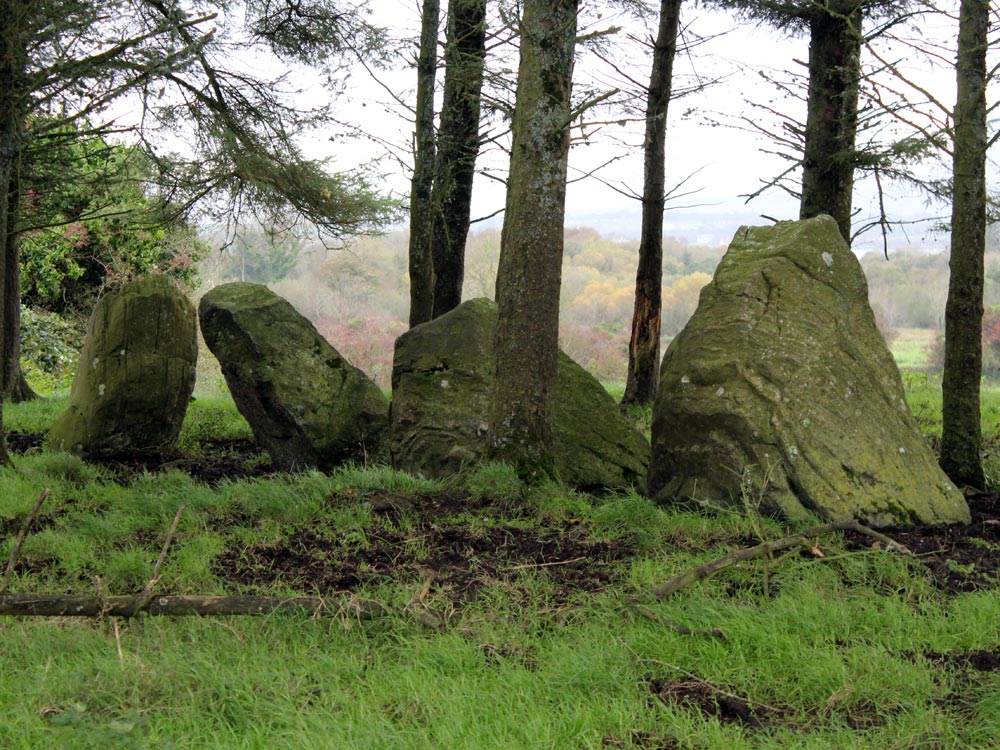
Two more monuments, which may have been cairns or boulder circles were completely destroyed in the past, and may have stood in the field just west of here.

